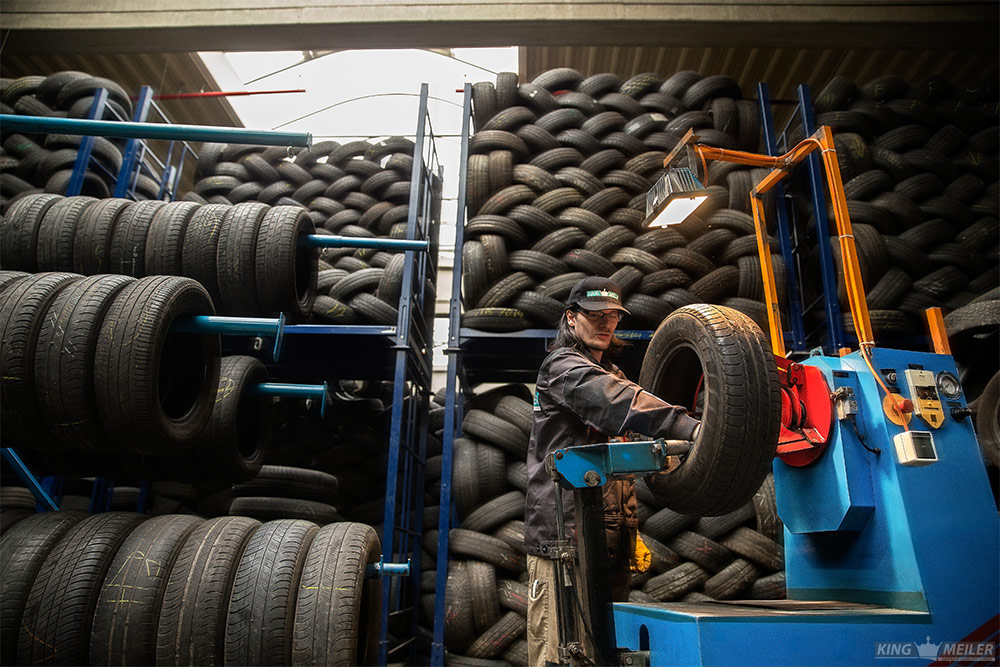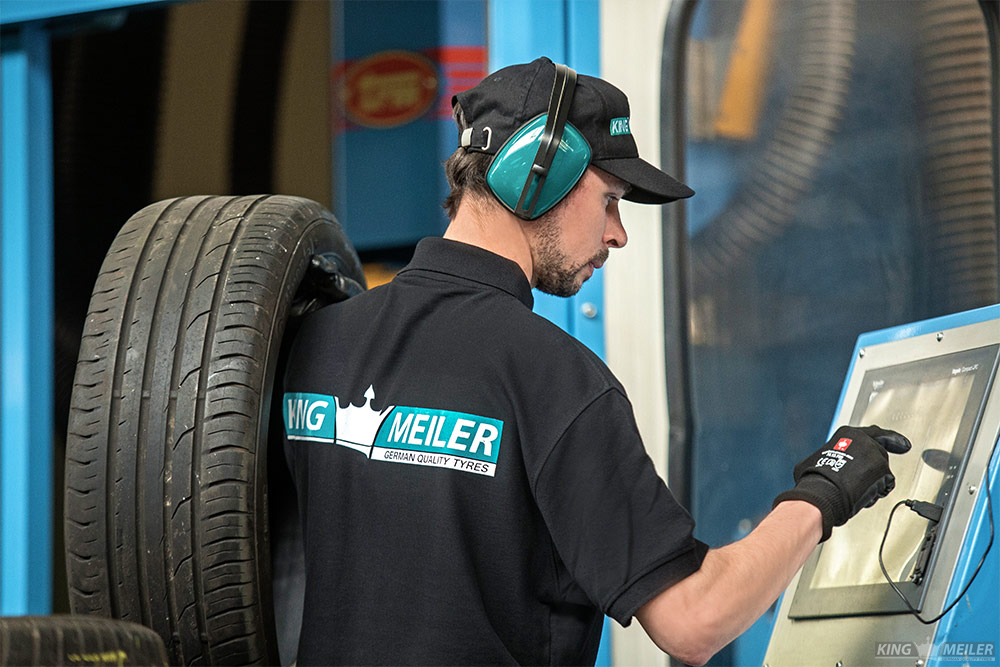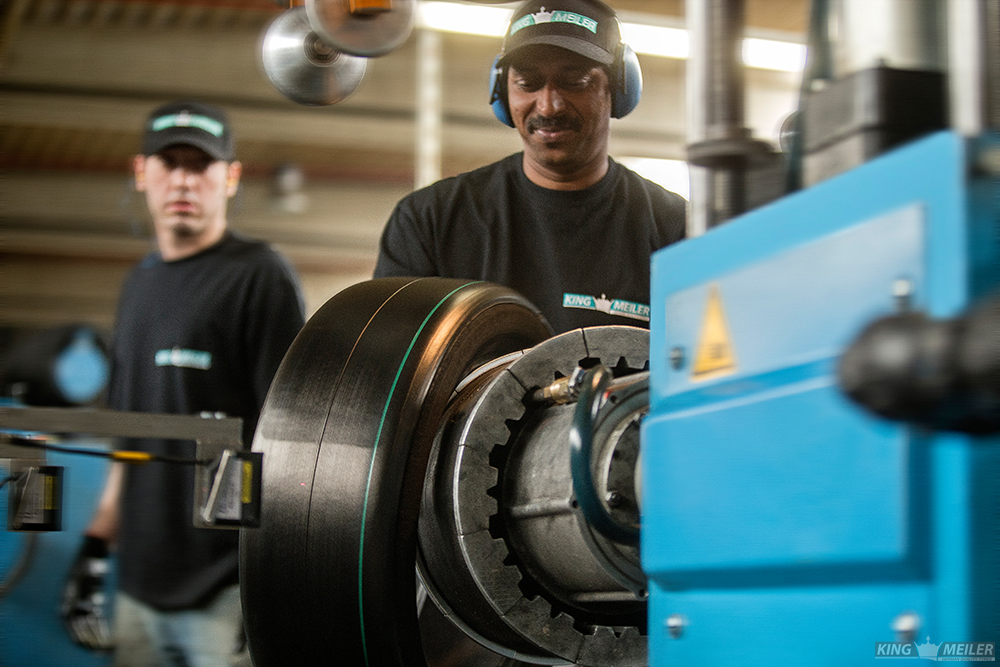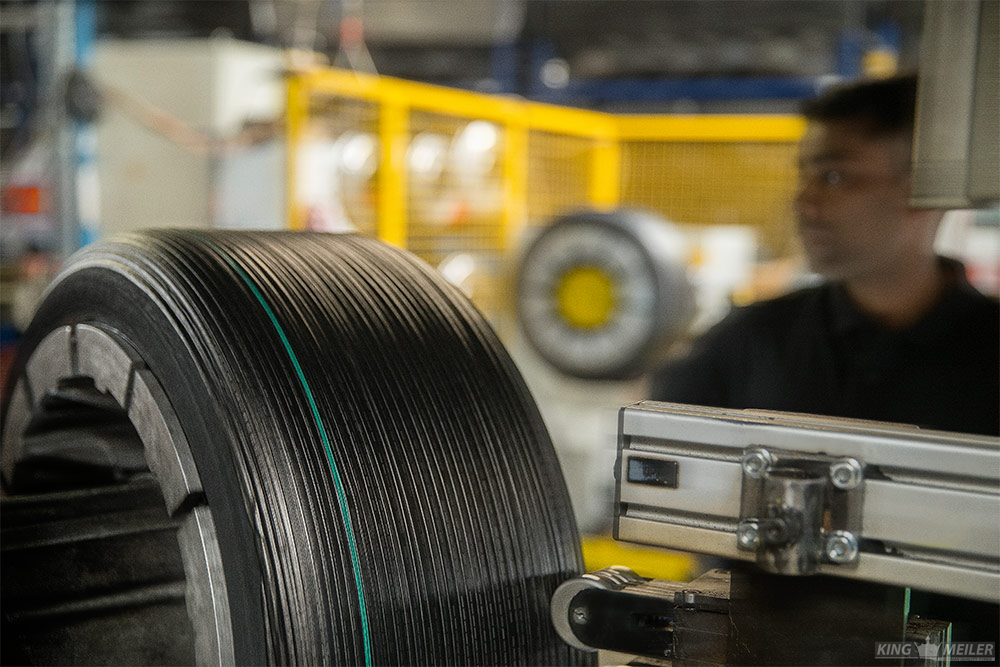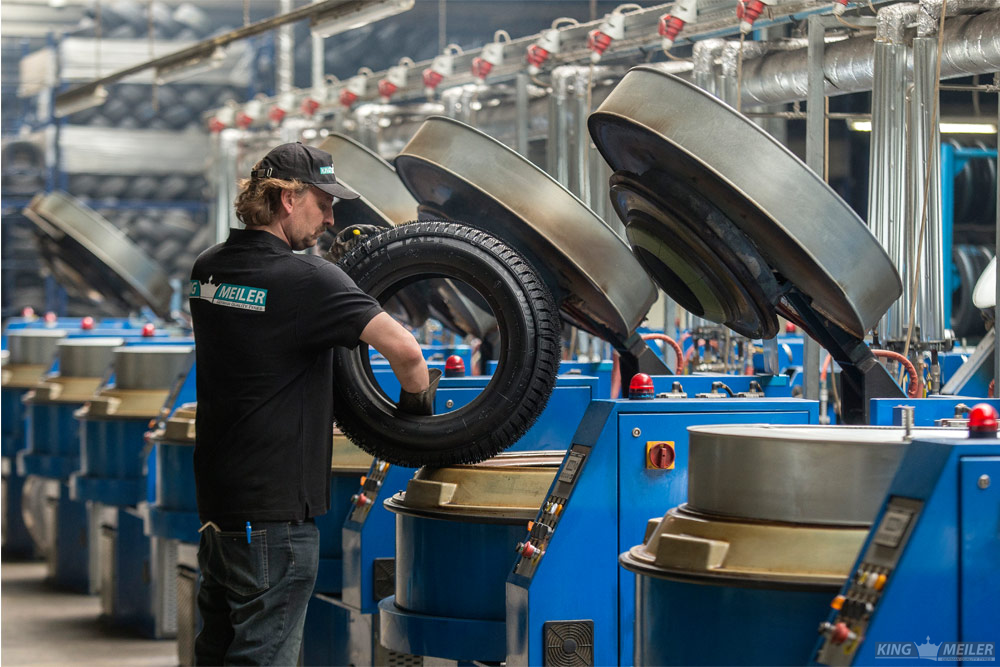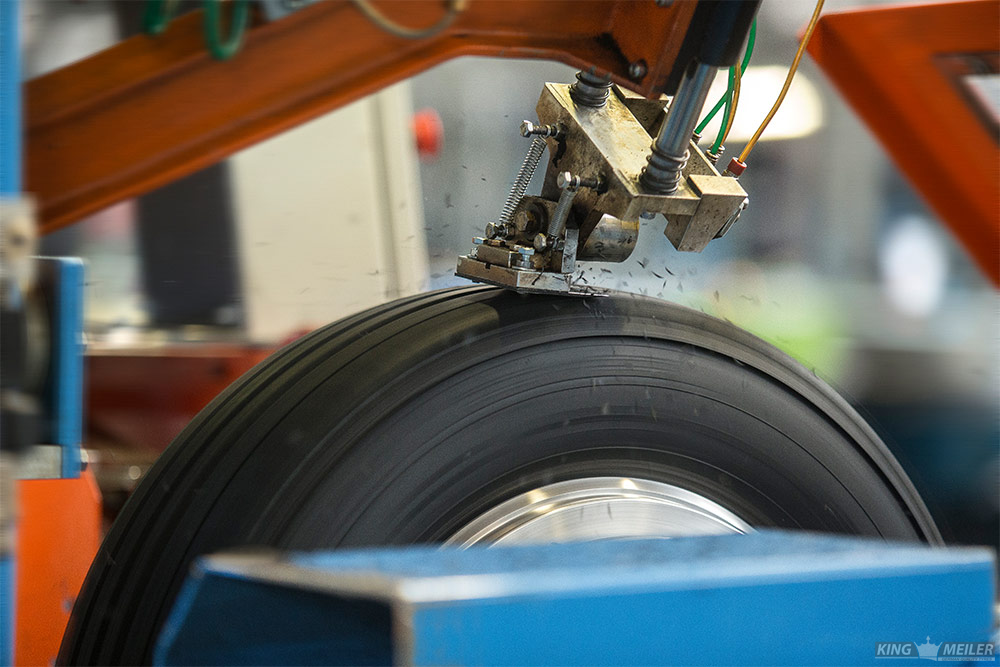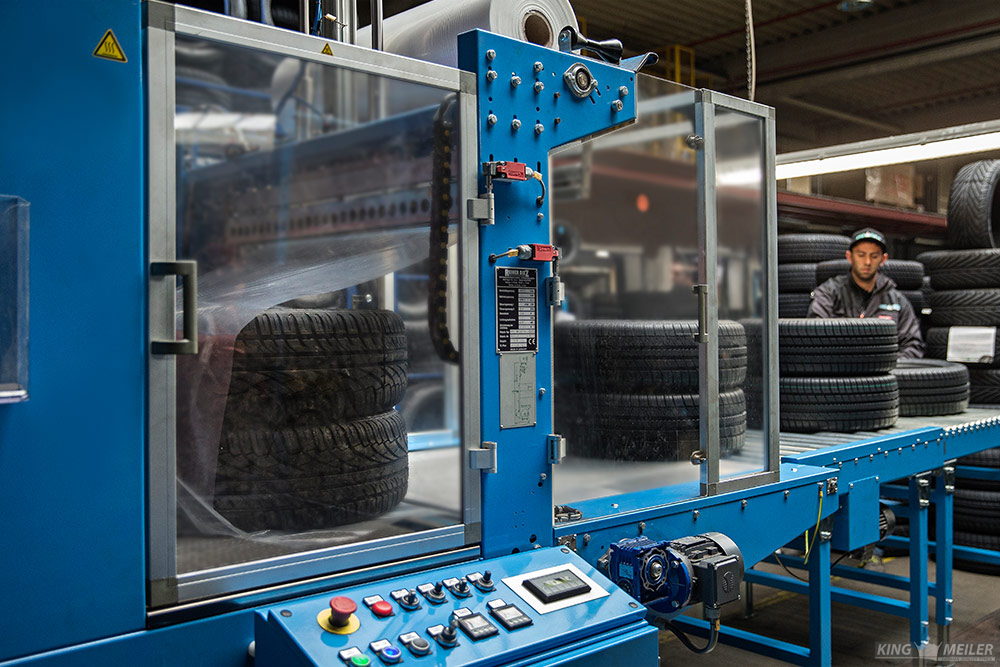And it does indeed spin
Industrial production of retreaded tyres could expand tremendously in the past few decades. With the aid of high-tech machinery, it became possible to control the necessary processes with far more precision than it was possible earlier. Computer-controlled special devices detect the differences in tenths of a millimetre, the other helps detecting defects in the structure of carcass. In addition to all these technologies, human beings with their experience represent one of the most important members in the production chain, assisting in processes that include manual and visual inspections.
Step 1: Sorting & inspection
Basis - Dismantling - Assembly
Worn tyres represent the basis and must be selected applying very strict criteria. The basic prerequisite is that the worn tyres are free from damages such as lacerations, bubbles, foreign objects and other such damages.
Hinghaus processes solely the selected fabric carcass made by premium manufacturers, which are not older than 7 years. Damage of all kinds represent an exclusion criterion. Only flawless new tyres which have been used for the first time fulfil high requirements of a future “King Meiler” tyre and make the leap to the next processing step.
Step 2: Roughening
When it’s planed, the chips will fly
After this starting point, the inspected and selected tyres must first lose something before they can gain something: any quantity of buffings. Fully-automated and computer-controlled buffers remove the old rubber and naps the tyres to exactly match the contour that is required for the next processing step. Wilhelm Hinghaus Handels- und Verwaltungsgesellschaft mbH & Co. KG uses most state-of-the-art buffers manufactured by TRM / Marangoni. The machine operator selects the programme for the tyres to be roughened, selecting dimensions, brand and profile via a touchscreen.
Buffings created in this step can be used for producing other usable products, which is very valuable from the ecological point of view. Hinghaus family collects containers of buffings. Companies specialised in recycling use this material to produce materials that are further used on e.g. sports fields, playgrounds or also in road construction. High resistance in combination with remarkable flexibility can be used in many other areas as well.
Step 3: Overlaying of fabric carcass
Adding a really thick layer...
Although the functionality of the extruder that is required in the next processing step is - earmarked - almost identical, it still uses two different overlaying procedures.
In “Camelback” procedure, the new tread compounds is squeezed out from the AZ extruder by an electronically adjusted die head into a desired thickness and width and applied using the applicator to the tread of the previously roughened carcass which has already been checked for imbalance. The selection of the respective rubber compound is made in accordance with the later intended purpose (summer, winter, all-season tyres etc.). The overlay thickness and the circumference of the tyre are constantly controlled during this entire process with the aid of a laser measuring equipment and visually presented. In the next processing step, another overlaying machine applies the special side-wall veneer to tyre flanks.
In addition to this type of veneering, Wilhelm Hinghaus Handels- und Verwaltungsgesellschaft mbH & Co. KG also works with the Orbitread process, during which a narrow band is applied to the carcass in several layers overlapping the rubber compound. A sophisticated camera system monitors the entire overlaying process in communication with the most state-of-the-art software.
Further processing of the carcass follows up using the “Black Swan” lateral-wall overlaying machine, in which the tyre flanks are wrapped with special bands using a sophisticated procedure.
Step 4: Heating
This is where it gets hot
The freshly applied rubber changes its chemical structure in heating presses; it cures completely at high temperatures and pressures over a predefined period of time. During vulcanisation, the condition of the rubber changes from plastic to elastic. For that purpose, every blank is inserted in the press prepared for the desired dimensions and profiles.
The blank is surrounded by mould segments in these presses, which determine the later appearance of the retreaded tyre in the combination of embossed grooves and pads. When the heating press is closed, the segments fit together into a closed mould. The blank is pressed from inside out by the counter-pressure of bellows filled with water, whereby the vulcanised rubber in the mould segments is shaped into its final profile.
Step 5: Finish
Last control and cosmetics
In order to prevent the so-called lacerations from occurring during the vulcanisation process when producing retreaded tyres, a large number of small air evacuation nozzles are provided in mould segments, through which the air and potential excessive rubber can escape during the heating process. Concentricity and pressure tests are carried out on semi-automatic deburring machines during the final inspection and the excessive rubber material is removed.
The result is...
Well-rounded matter: Factory-retreaded tyres.
Step 6: Shipment
Promptly and properly shipped
Supported by our logistics developed over many decades, we supply our customers with retreaded tyres in and outside Europe on a large scale, although the majority of our customers is from Germany. In addition to delivery and direct collection with aid of containers or trailer trains, we have also expanded our offer by delivering directly to your customers. Business and private customers receive conveniently and directly from us the tyres you have ordered - it is also possible to do it online - to their address, or also, for instance, to specialist workshops to be correctly mounted. Please contact us and learn more about the extensive range of options possible.

